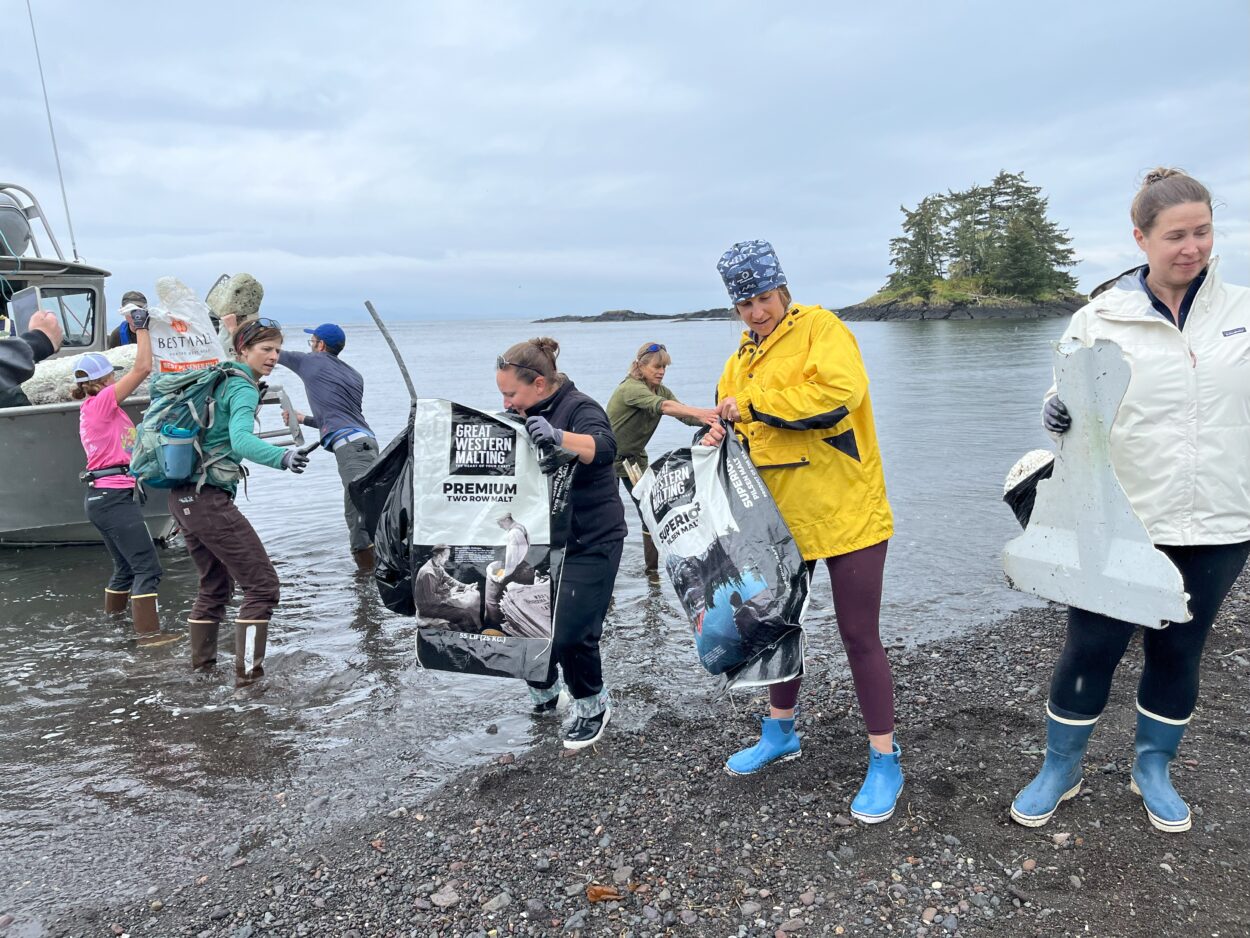
Whether in Sitka Sound or the Bering Sea, a beach cleanup is a major undertaking. So much debris washes ashore on Alaska’s coastline that collecting all of it would be impossible — but that doesn’t mean it’s not a problem worth trying to solve. Recently, the Ocean Conservancy and the Sitka Sound Science Center took an unusual group of people on a beach cleanup near Sitka to wrap their hands around some marine debris — and wrap their minds around what to do about it.
The original destination for the cleanup is a cove on Biorka Island, outside of Sitka. But that beach has too much kelp for the boat to safely offload passengers, so the captain reroutes. To get off on the beach at the second destination, on the eastern side of Kruzof Island, means waiting an hour until the tide comes in.
“I will say that it’s never gone exactly how I thought it would when I was doing the planning,” says Kristina Tirman, who coordinates the Arctic Marine Debris program for the Ocean Conservancy. She is all too familiar with the challenges of marine debris cleanup in Alaska.
“It’s hard,” Tirman says. “It’s hard to do cleanups here, and it’s hard to get to the beaches that need the most help, because those beaches are often the ones that are the most exposed. So you can imagine that the reason that they’re covered in driftwood and garbage is because there are waves that are crashing, and all these other factors that, you know, lead to marine debris being there also lead to those beaches being difficult to access.”
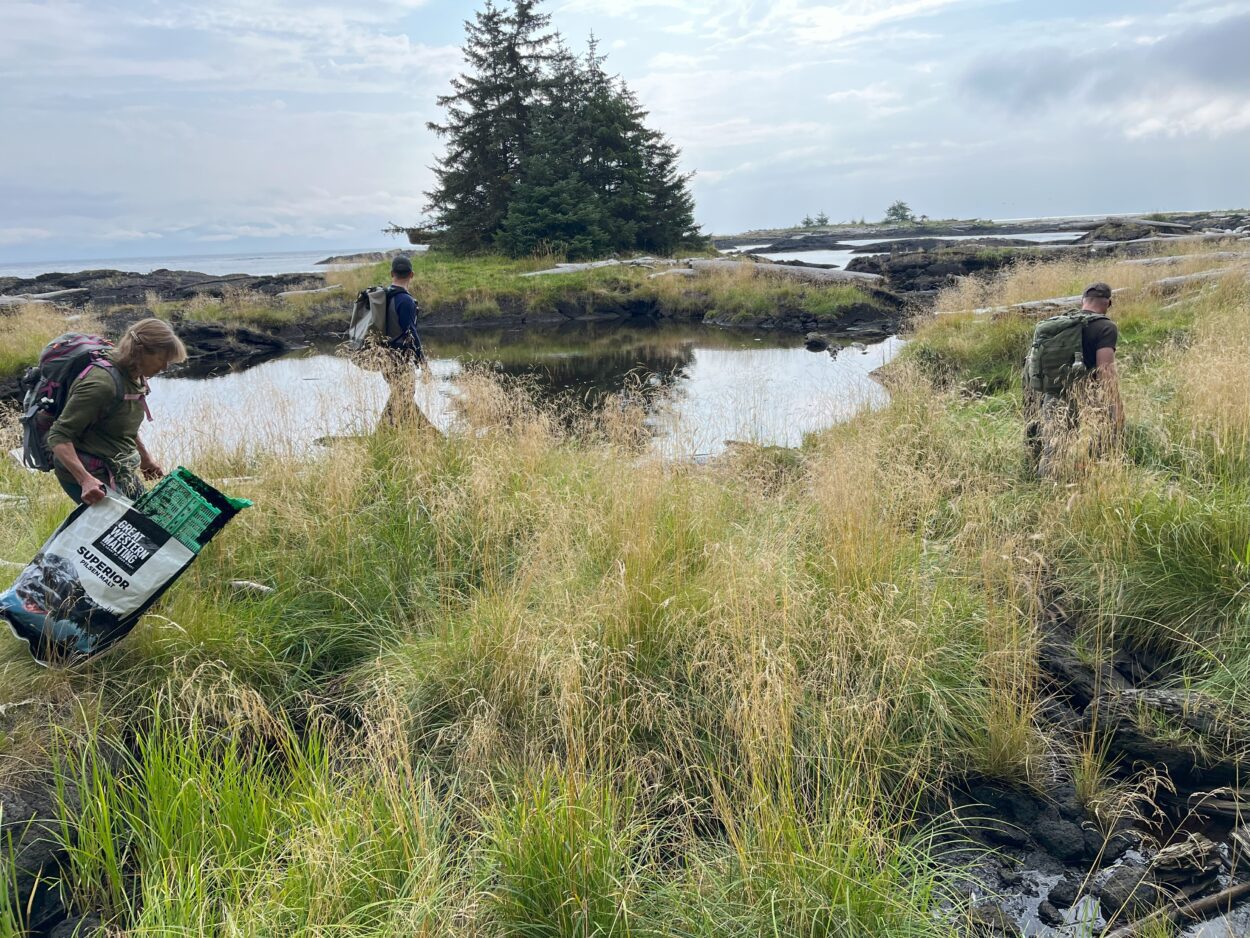
After waiting for the tide to turn, the group of 40 – including volunteers, Coast Guard commanders, and congressional staffers from Senator Dan Sullivan’s office – disembarks on the black sand beach. The scene looks a little like an Easter egg hunt, with debris seekers peering under rocks and behind tufts of beach grass for trash. One volunteer dislodges two mismatched shoes from an embankment, and another teases threads of neon nylon rope out from a tangle of roots. A third group has found the motherlode.
“Trawl web! Lots of plastic water bottles. And we found part of a Korean hagfish trap.”
Linda Behnken, who runs the Alaska Longline Fisherman’s Association in Sitka, helps to heave part of a brightly-colored fishing net out from under a driftwood log. It’s so heavy that a dozen people are enlisted to carry the pieces back to the boat.
Tirman says this net, and much of the debris that washes up on Alaska shores, can be traced to sources many miles away.
“You know, we saw after the 2011 tsunami in Japan that a lot of tsunami debris came over this way,” Tirman says. “And so a lot of the debris just comes from all over.”
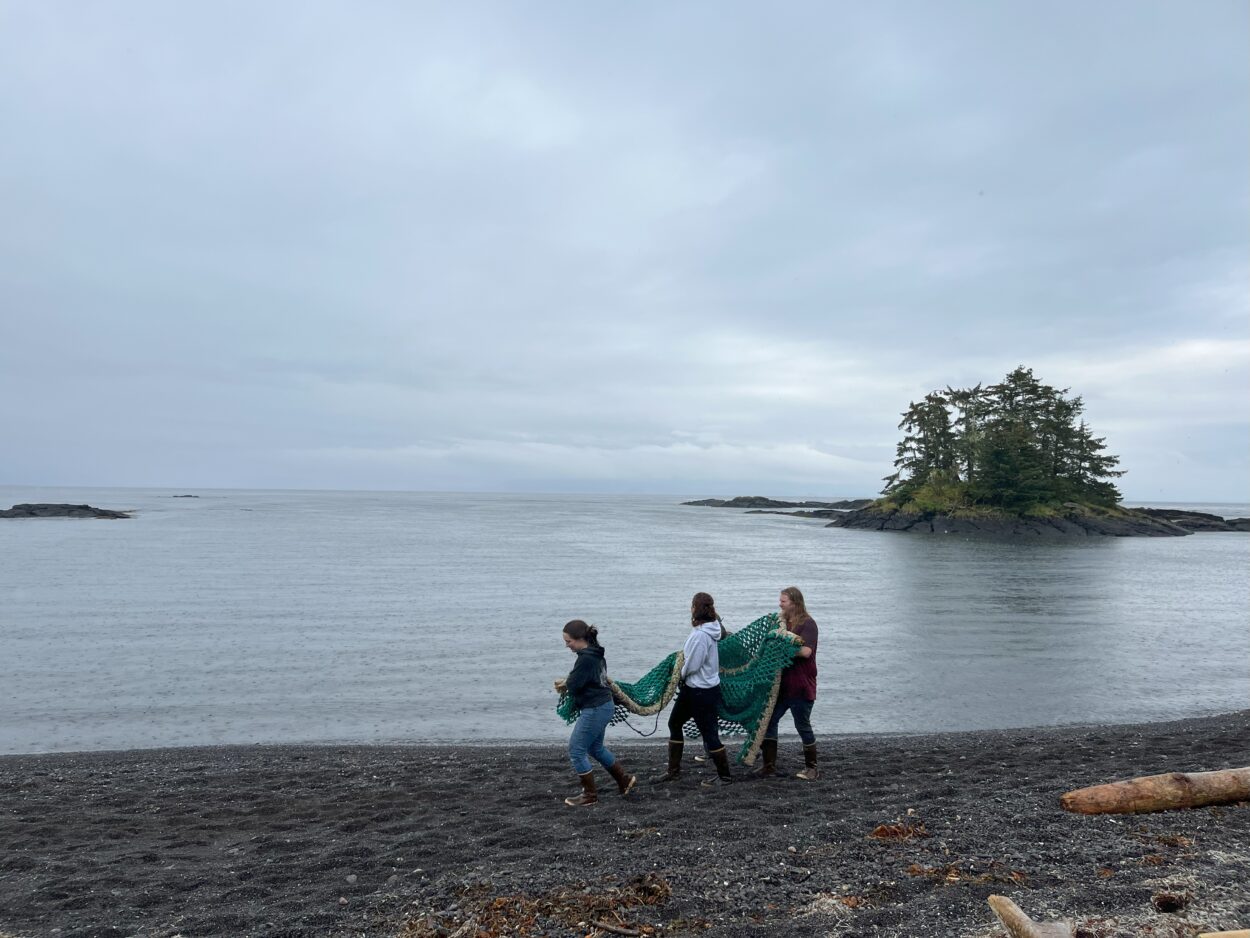
One of Alaska’s debris hotspots is around St. Paul Island, 1,300 miles from Sitka in the Bering Sea. Lauren Divine runs the Ecosystem Conservation Office for the Aleut Community of St. Paul. She’s here with her 18-month-old daughter Amelia, who is hunting for treasures in the sand. In St. Paul, Divine says that debris has a major impact on the island’s fur seal population.
“So what we get is packing bands, or pieces of trawl net or fishing line that are wrapped around the seals,” Divine says. “And it usually happens when they’re really young and they go into the water for the first time, or over their first winter. And then they try to swim through something, they get it stuck around their neck, and then they grow.”
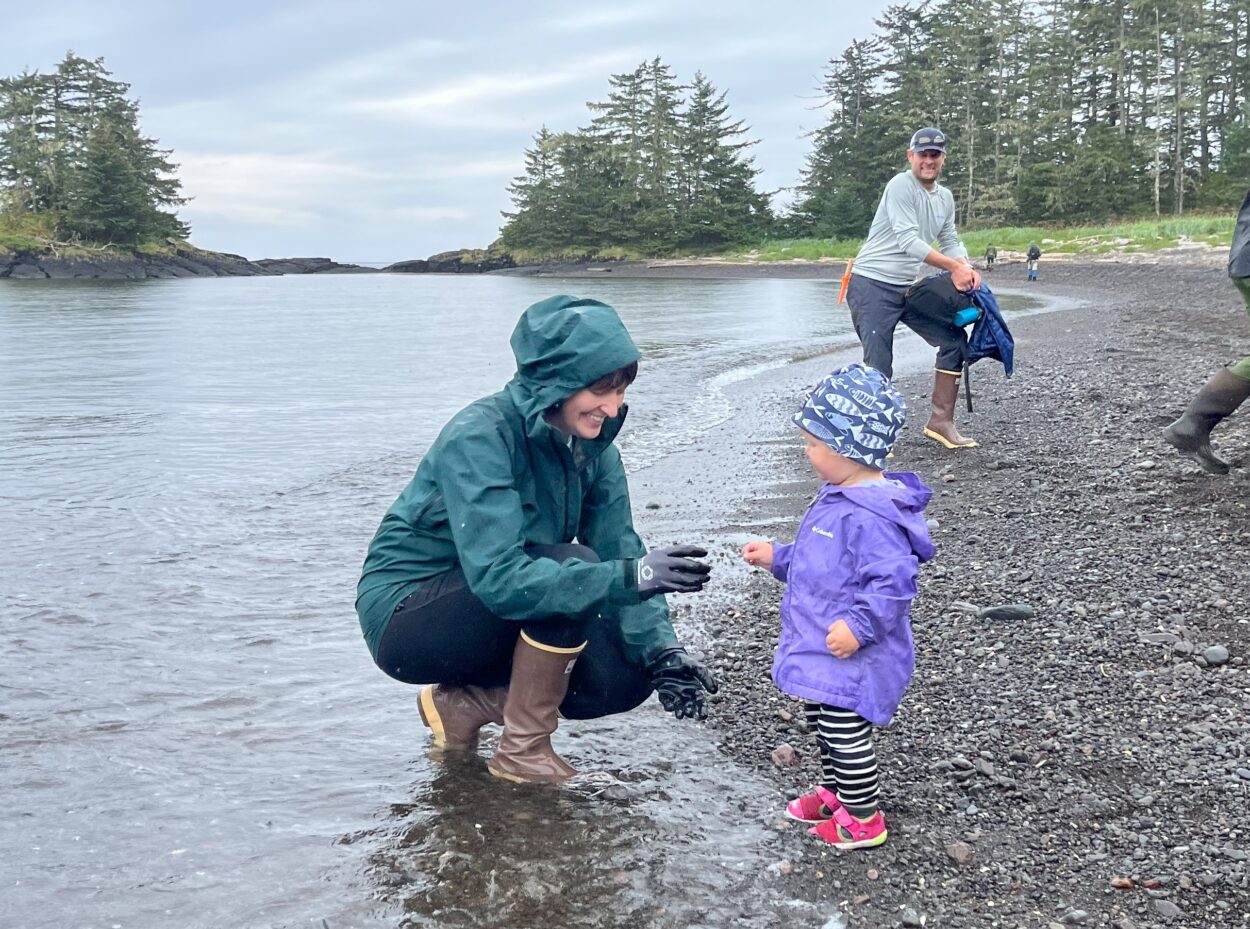
In remote Alaska, the challenge doesn’t end when beaches are clean. Disposal is also a huge problem. She spent part of the summer working on repackaging debris from a previous cleanup. She says the sacks full of garbage sat out so long that the bags themselves started to degrade.
“It’s like over 300 Super Sacks that have never been able to get backhauled,” Divine says. “So they were sitting out in the environment, and they basically grew back into the landscape and started degrading and putting the debris back out in the environment.”
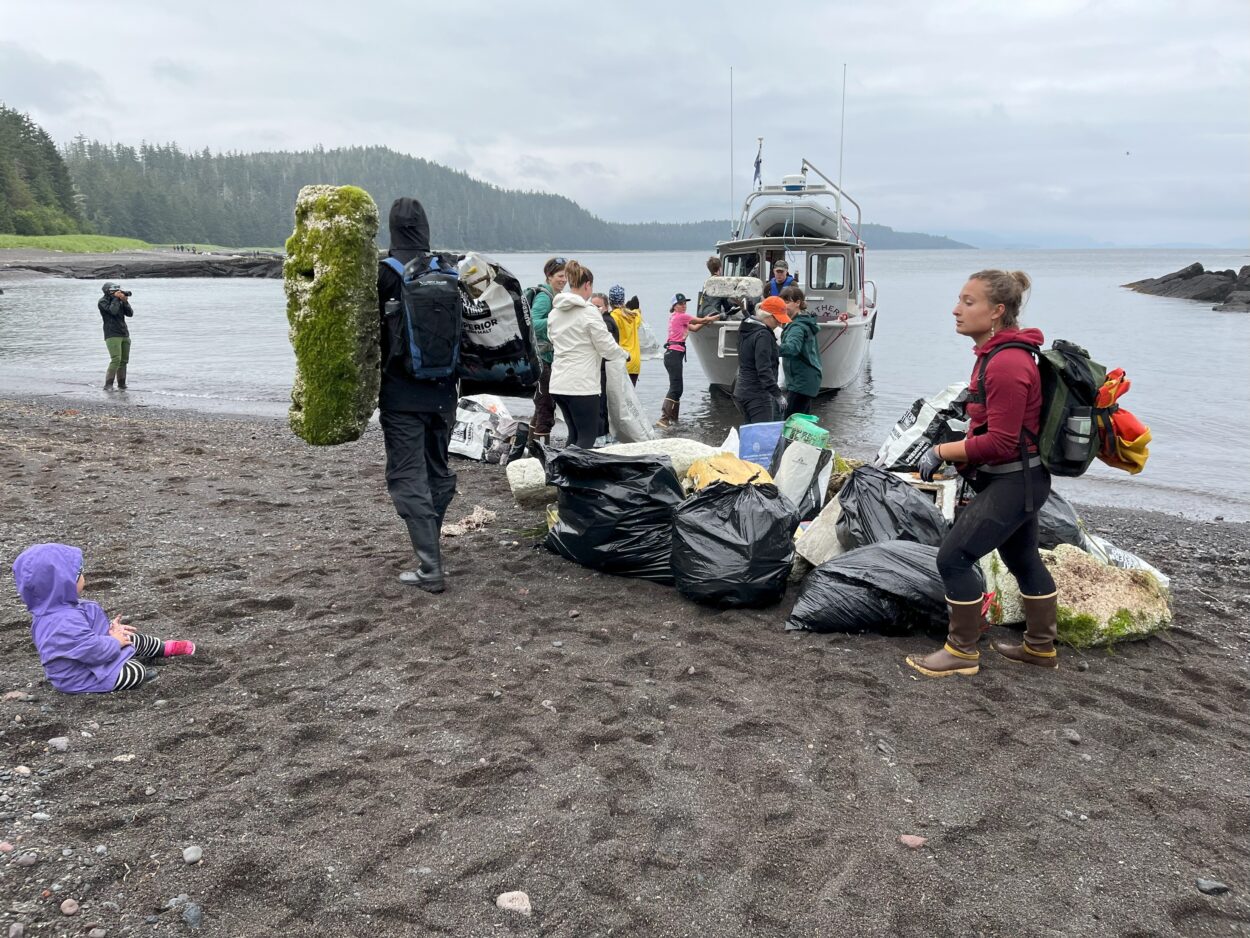
Marine debris is not only dangerous for wildlife – it can also be a hazard to human health and safety. Shellfish in Sitka, which are an importance subsistence food, have been found to contain microplastics. Ghost fishing, where abandoned fishing gear continues to catch and kill fish, is another side effect. Behnken says it can even be perilous to fishermen.
“Just last month, we had the one day king salmon opening one day,” Behnken says. “And we had a member who was starting off really well in the morning. He was catching kings and then he got tangled in a huge piece of trawl web. It took out two of his whole lines, and it was tangled in the stabilizer.”
As they walk along the beach, researchers from the Ocean Conservancy are cataloging the types of debris with clipboards and pencils. Part of their goal is to collect data on what is washing up and where. That could help guide lawmakers to advocate for policies to help prevent marine debris from accumulating.
Back at Sitka’s Crescent Harbor, volunteers load two full truckloads of debris, which will be sorted for recycling or hauled to the waste transfer station. With that, today’s cleanup is over, and one small piece of Alaska’s coastline is a little bit cleaner. Tirman says that even though there’s still work to do, building awareness of the problem – by hosting cleanups, and by sharing photos and data from the events – is a big first step.
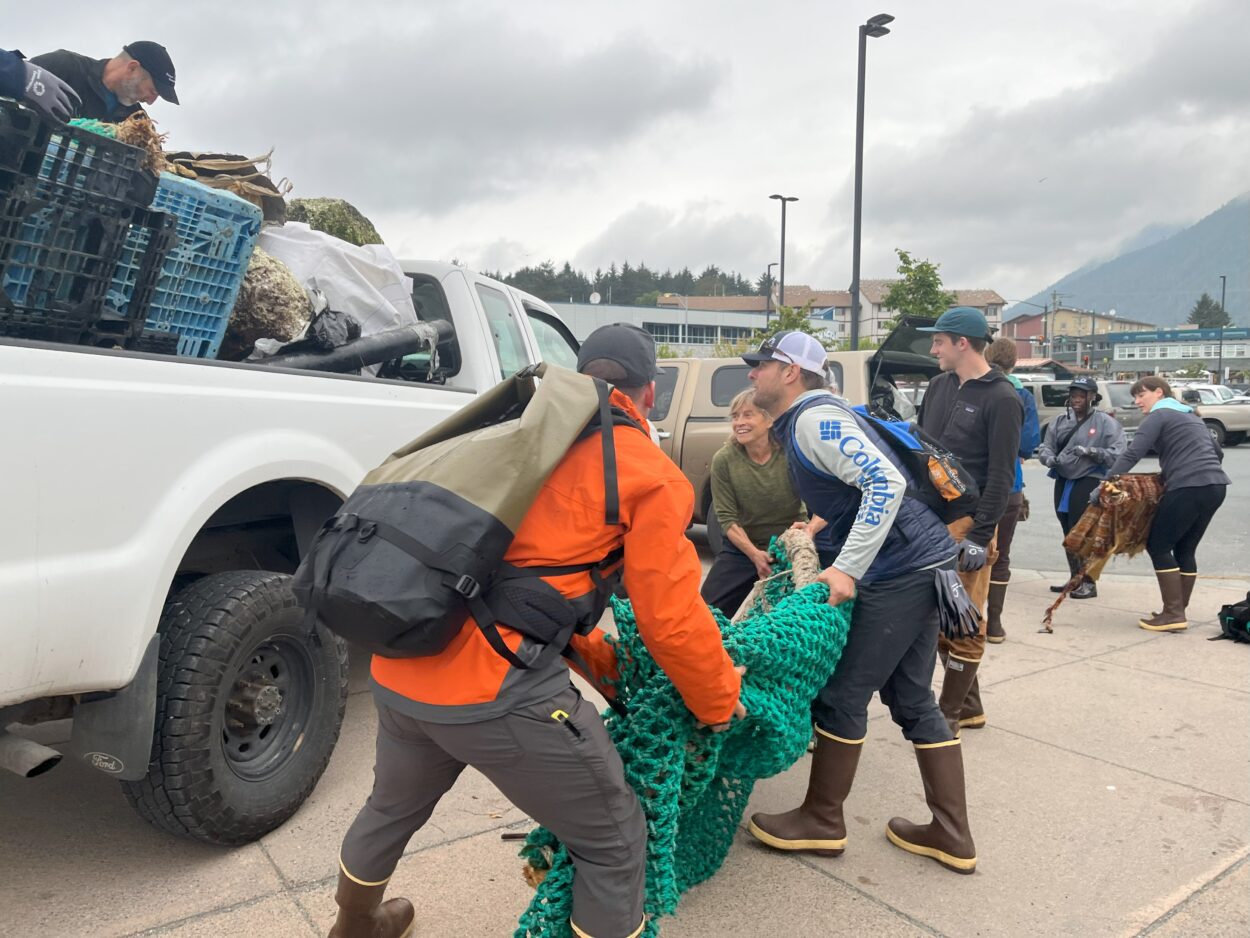
“I think a lot of people picture the Alaskan wilderness and ecosystems as being really, you know, clean and not impacted by garbage because our population is so low,” Tirman says. “But I think when people see photos of the beaches here, and just how impacted they are by marine debris, it’s really eye-opening.”






























